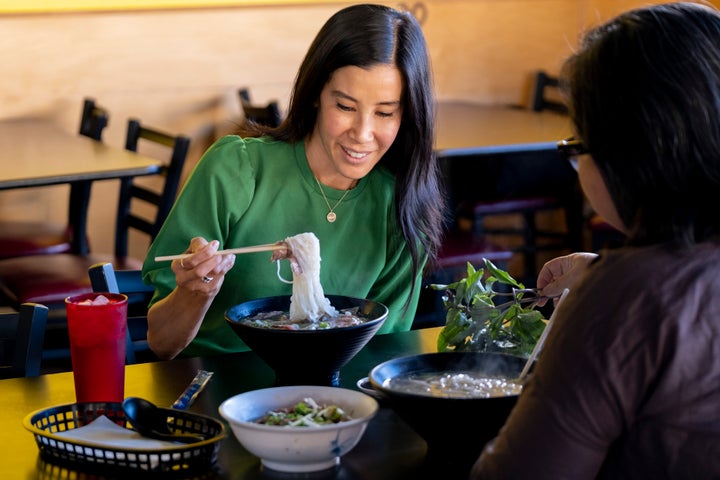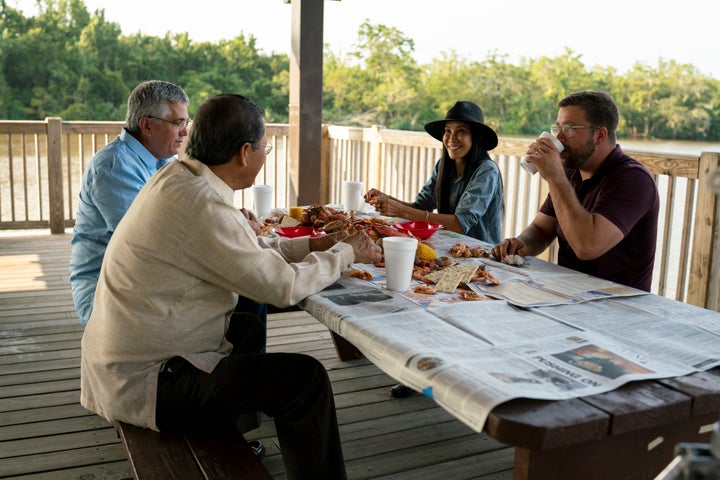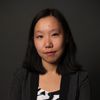
One of the most significant effects of being underrepresented is talking ourselves into thinking something isn’t possible because we’ve rarely seen it — or haven’t seen it at all — and have no way of imagining the possibility. So when Lisa Ling pitched a docuseries telling stories about Asian American history through food and restaurants, she didn’t think it would happen.
“We pitched, like, 10 different ideas at the same time, and this is the one that they picked up, and I was shocked. I was even hesitant about pitching it because I just thought, ‘They’re not going to buy this,’” the veteran journalist said in an interview. “I’ve tried for many years to tell Asian-led stories for so long. Right now, there definitely is this opening, and I cannot tell you how excited it makes me that the response to this show has been so positive, both in the press and from people who’ve watched it. Like, my 10-year-old self would just be in total disbelief.”
“Take Out with Lisa Ling,” now streaming on HBO Max, does several things that are remarkable. Food and travel shows sometimes take an idealistic approach, positioning food as a unifier, suggesting that breaking bread can break divides. Of course, it has never been that simple, and Ling’s series doesn’t sugarcoat the truth. Throughout U.S. history, food and restaurants have been a means for immigrants to gain some level of acceptance — though certainly not enough. These things are also “a means for survival,” as Ling said.
“These kinds of stories are so pervasive throughout the Asian community, these stories of survival by way of food and restaurants,” she said.
In addition, Asian Americans often start from the default position of being “the other.” We have to explain ourselves, usually to a white audience. But the Asian American chefs, restaurateurs, artists, activists and scholars showcased in Ling’s series are using food to take ownership of their own narratives. Food connects them to their families and cultures, and bridges gaps across generations. Food has become a vehicle for unlocking stories that have gone untold or were erased.
“It is a device for people to be able to get connected with stories that they may otherwise have never known before,” Ling said. “And let’s face it, when it comes to Asian Americans, most of us Asian Americans didn’t grow up knowing much about our own history in this country.”

Each episode focuses on a different Asian American community and how its cultures and cuisines have transformed the history of where they live. The series opens with an episode about the descendants of Filipino settlers in Louisiana, who are trying to preserve and bring more attention to their ancestors’ important contributions to the region’s rich culinary history. An episode about Bangladeshi food in New York features the chef and writer Sohla El-Waylly and New York City Council member Shahana Hanif, who grew up in and now represents Little Bangladesh in Kensington, Brooklyn. There’s an episode about the generations of Vietnamese Americans in Little Saigon in Orange County, California, where the robust restaurant scene has helped make Vietnamese food more mainstream over the years.
There’s a real specificity to each episode and a balance between explaining the necessary context while not catering to the white gaze. Ling credits that largely to the series’ Asian American showrunner, Helen Cho, a veteran of Anthony Bourdain’s “No Reservations” and “Parts Unknown” and W. Kamau Bell’s “United Shades of America.” Cho hired a majority-Asian American crew and Asian American directors. Each director brought their own vision and ideas to each episode, everything from the featured locations and people, to music by Asian American artists. For instance, the punk band The Linda Lindas wrote and performed the show’s very catchy theme music.
“It’s the most Asian Americans I’ve ever worked with,” Ling said. “It required these Asian American directors who were aware of these artists and who had this vision of how to tell the story of their community.”

Of course, the series only scratches the surface of the vast and varied experiences of Asian Americans. Ling said HBO Max gave her only six episodes to start, but that she has enough ideas to fill at least 20. “We could be up and running tomorrow” if the show got renewed for another season, she said.
Given the limited number of episodes, Ling aimed to select stories that represent new angles or little-known chapters of history.
“In every episode, we learned something that we didn’t know previously about an Asian American community,” Ling said. “I think Asian Americans these days know that Filipinos were the first Asians to settle here. But I had no idea they settled in the bayous of Louisiana, and that they championed the shrimp-drying industry, and that gumbo might not be gumbo if it weren’t for the efforts of those early Filipino settlers.”
The second episode takes place in and around Sacramento, California, where Ling herself grew up. Just miles away was a rich story completely unknown to her. In the early 1900s, a period of deep anti-Asian racism, violence and discrimination, Chinese immigrants built their own town called Locke. The episode also weaves in Ling’s own family history: She visits Hop Sing, a Chinese restaurant in Folsom that was once owned by her grandparents.
“I think my grandparents would be shocked that one day, I would have this opportunity to highlight their story, but also the story of Asian Americans, these hidden Asian American stories,” she said. “I hope that Asian Americans feel a kind of ownership of all of these stories — because these are our stories.”
“Take Out with Lisa Ling” is now streaming on HBO Max.
